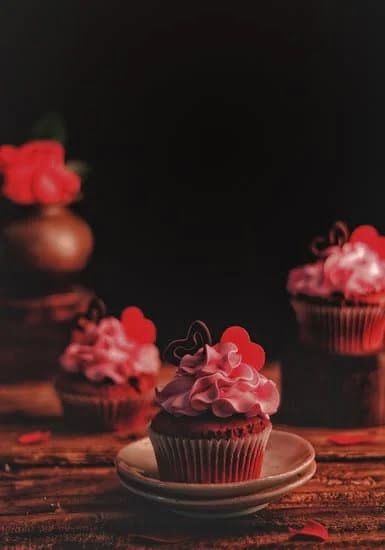Fruit decor on cake has become a popular trend in the world of baking and cake decorating. The use of fresh, vibrant fruits as a decorative element adds both visual appeal and a refreshing touch to the sweet treat. In this article, we will explore the art of fruit decor on cakes, its history, techniques, best fruits for decorating, and how different cultures incorporate fruits into cake design.
Throughout history, fruit has been used as a decorative element on cakes in various cultures around the world. From ancient times to modern trends, the use of fruits on cakes has evolved and flourished. We will delve into the rich history of fruit decor on cakes and how it has become a timeless tradition that continues to inspire bakers and cake decorators today.
The art of fruit arrangement requires skill and creativity to create stunning and visually appealing designs. We will provide tips and tricks for effectively arranging fruits on cakes, as well as explore different techniques such as using fondant versus fresh fruit, and other creative options for achieving beautiful fruit decor. Whether it’s for a wedding cake or a birthday cake, there are endless possibilities for incorporating fruits into cake design, which we will explore in this article.
History of Fruit Decor on Cakes
The use of fruit as a decorative element on cakes has a long and rich history that spans across different cultures and time periods. From ancient civilizations to modern trends, the practice of incorporating fruits into cake design has evolved and continues to be a popular choice for adding color, flavor, and visual appeal to baked goods.
In ancient times, fruits were considered a symbol of luxury and abundance, often reserved for special occasions and celebrations. The Greeks and Romans used figs, dates, and honey to sweeten their cakes, while also adorning them with fresh fruits like pomegranates and grapes. In medieval Europe, elaborate fruit displays became a status symbol at royal banquets and feasts, with the wealthy using exotic fruits such as oranges and pineapples as decorative elements on their cakes.
Fast forward to the modern era, the trend of using fruit decor on cakes has seen a resurgence in popularity. With an emphasis on natural ingredients and fresh flavors, many people are turning to fruit as a healthier alternative to traditional cake decorations such as sugary icings or artificial toppings.
This trend is also reflected in the growing popularity of “naked” or “semi-naked” cakes, where the natural beauty of the cake layers is complemented by vibrant fresh fruits as decoration.
The art of incorporating fruit decor on cakes has become more than just an aesthetic choice – it is also a way to add depth of flavor and texture to desserts. Whether it’s citrus zests for a burst of tangy flavor or juicy berries for a pop of color, the versatility of fruits allows for endless creative possibilities when it comes to cake decorating.
| Time Period | Fruit Decor |
|---|---|
| Ancient Times | Figs, dates, pomegranates |
| Medieval Europe | Oranges,pineapples |
| Modern Era | Natural ingredients,naked/simic naked cakes |
The Art of Fruit Arrangement
Tips for Fruit Arrangement
When it comes to arranging fruits on a cake, it’s important to consider the overall design and aesthetic you want to achieve. Start by selecting a variety of fruits that complement the flavor profile of the cake and also add vibrant colors and textures. Experiment with different combinations of fruits to create visually striking arrangements that are both pleasing to the eye and palate.
Tricks for Creating Stunning Fruit Decor
One trick for creating stunning fruit decor on cakes is to pay attention to symmetry and balance. Arrange the fruits in a way that creates a harmonious look, whether it’s concentric circles, diagonal lines, or cascading patterns.
Another trick is to vary the sizes and shapes of the fruits to add dimension and visual interest to the cake design. Additionally, consider using different cutting techniques such as slicing, dicing, or carving fruits into decorative shapes to add flair to your fruit decor.
Importance of Presentation
Lastly, presentation is key when it comes to fruit decor on cakes. Pay attention to how you place each piece of fruit on the cake, ensuring that they are evenly spaced and neatly arranged.
Take your time when placing each fruit, and don’t be afraid to make adjustments until you achieve the desired look. The way you present the fruits on the cake can make all the difference in creating a visually appealing masterpiece that will impress your guests or customers.
By following these tips and tricks for creating stunning fruit decor on cakes, you can elevate your cake decorating skills and produce beautiful creations that not only look amazing but also taste delicious with fresh bursts of fruity flavors.
Best Fruits for Cake Decorating
When it comes to choosing the right fruits for cake decorating, it’s important to consider not only the visual appeal but also the taste and texture of the fruits. Certain fruits hold up better on a cake than others, and some pair better with certain flavors. Here are some tips and guidelines for selecting the best fruits for your cake decorating needs.
Fresh, Seasonal Fruits
One of the best choices for fruit decor on cakes is using fresh, seasonal fruits. Not only will these fruits be at their peak in terms of flavor and quality, but they will also bring vibrant colors and natural beauty to your cake. Berries such as strawberries, blueberries, raspberries, and blackberries are popular choices due to their small size and ability to be placed whole or sliced as decoration.
Dried Fruits
Dried fruits can also be a great option for cake decorating, especially for more rustic or traditional styles of cakes. Dried apricots, figs, cranberries, or even exotic options like dried mango or pineapple can add a unique touch to a cake. Their chewy texture and concentrated sweetness can complement certain cake flavors beautifully.
Tropical Fruits
For cakes with a more exotic flair or for summer-themed designs, tropical fruits like kiwi, mango, pineapple, or passion fruit can add an eye-catching pop of color and refreshing flavor to your cake. Just be mindful of their juiciness – you may need to pat them dry before placing them on the cake to prevent any excess moisture from affecting the frosting.
By carefully considering the type of fruit that will best complement your cake’s flavor profile and design aesthetic, you can elevate your creations with stunning and delicious fruit decor on cake. Whether you opt for classic choices like berries or venture into more unconventional options like dragon fruit or starfruit, there’s no doubt that fruit decor adds a beautiful touch to any cake.
Fruit Decor Techniques
When it comes to decorating cakes with fruit, there are various techniques to consider. The most common fruit decor options include using fondant, fresh fruit, and other creative alternatives. Each option offers its own unique aesthetic and practical considerations.
Fondant is a popular choice for cake decorators due to its versatility and ability to be shaped into intricate designs. It can be dyed in a multitude of colors and molded into different shapes, making it an ideal option for creating detailed fruit replicas or elaborate patterns. However, some may find fondant to be overly sweet or overly artificial in taste.
On the other hand, fresh fruit provides a natural and refreshing touch to cake decor. From vibrant berries to tropical slices, fresh fruit can add a burst of color and flavor to any dessert. When using fresh fruit for decoration, it’s important to consider the moisture content of the fruits as they may affect the overall texture of the cake over time.
In addition to fondant and fresh fruit, there are other creative options for decorating cakes with fruits. This includes techniques such as crystallized fruit slices, candied fruits, or even dried fruit arrangements. These alternatives offer a unique twist to traditional fruit decor while adding interesting textures and flavors to the cake design.
| Fruit Decor Option | Characteristics |
|---|---|
| Fondant | Versatile, can be shaped into intricate designs but may be too sweet for some |
| Fresh Fruit | Natural touch, adds color and flavor but moisture content may affect cake texture over time |
| Other Creative Options (crystallized/candied/dried) | Unique twist to traditional decor, adds interesting textures and flavors |
Fruit Decor Ideas for Different Cake Styles
The use of fruit as a decorative element on cakes has become increasingly popular, especially for special occasions such as weddings, birthdays, and other celebrations. The versatility of fruit allows for endless creativity in cake design, making it a favorite choice among bakers and cake decorators. Whether you’re looking to add a pop of color or a touch of freshness to your cake, incorporating fruit decor is a sure way to impress your guests.
For wedding cakes, fresh berries like strawberries, blueberries, and raspberries are often used to create elegant and romantic designs. These vibrant fruits can be strategically placed on tiers or cascading down the sides of the cake for a stunning effect. Edible flowers such as orchids and roses can also be paired with fruits to add a touch of sophistication to the overall design.
On the other hand, birthday cakes offer a more playful opportunity for fruit decoration. Slices of kiwi, pineapple, and mango can be arranged in fun patterns or used to create adorable characters for children’s birthday cakes. Additionally, incorporating tropical fruits like coconut and passionfruit can elevate the presentation while adding delicious flavors to the cake.
When it comes to other special occasions such as baby showers or anniversaries, fruit decor on cakes offers a versatile way to personalize the design according to the theme or preferences of the recipient. From delicate citrus slices for a refreshing summer cake to bold tropical fruits for an exotic celebration, there are countless creative options for using fruit as cake decorations.
With the right selection and arrangement of fruits, any cake can be transformed into a work of art that not only looks beautiful but also tastes delightful.
Fruit Decor on Cake in Different Cultures
Fruit decor on cake is a versatile and beautiful way to add color, flavor, and visual appeal to any type of cake. From ancient times to modern trends, different cultures have incorporated fruits into cake design in unique and creative ways. Let’s explore how fruit decor on cake is used in various cultures around the world:
- In Italy, the traditional Italian wedding cake, known as “millefoglie,” features layers of flaky pastry filled with custard and topped with fresh berries such as strawberries, raspberries, and blueberries. This fruity decoration symbolizes abundance and prosperity for the newlyweds.
- In Japan, the art of “Mizuhiki” involves using decorative cords made from rice paper to create intricate designs on cakes. These designs often incorporate fruits such as persimmons, oranges, or peaches, which are believed to bring good luck and happiness.
- In Mexico, the popular dessert “Tres Leches Cake” is often adorned with tropical fruits like mangoes, pineapples, and kiwi. The vibrant colors of these fruits not only add a refreshing flavor but also represent joy and celebration in Mexican culture.
Fruit decor on cakes is more than just a visual embellishment; it carries deep cultural significance and symbolism in various traditions around the world.
Moreover, incorporating fruits into cake designs not only adds aesthetic appeal but also offers a healthier alternative to traditional cake decorations. By using fresh fruits instead of artificial ingredients or excessive amounts of sugar, cakes can be both visually stunning and better for overall health. This trend has been embraced by health-conscious individuals looking for delicious yet nutritious options for celebrating special occasions with fruit-decorated cakes.
Fruit Decor on Cake
When it comes to decorating cakes, many people opt for traditional sugar-based decorations such as fondant or buttercream. However, in recent years, there has been a growing trend towards using fresh fruit as a healthier and more natural alternative for cake decoration. Not only does fruit add a pop of color and freshness to cakes, but it also provides a nutritious and delicious element to the overall dessert.
Here are a few reasons why fruit decor on cake is becoming increasingly popular:
- Health Benefits: Unlike sugary decorations, fresh fruits offer vitamins, fiber, and antioxidants that can benefit your overall health. By incorporating fruit into cake decoration, you can create a dessert that not only looks beautiful but also provides some nutritional value.
- Natural Beauty: Fresh fruits bring a natural and vibrant aesthetic to cake designs. Whether it’s sliced strawberries, kiwi flowers, or pineapple rings, the colors and shapes of different fruits can elevate the presentation of any cake.
- Versatility: One of the great things about using fruit for cake decoration is its versatility. From simple sliced fruits arranged in patterns to intricate fruit carvings, there are endless possibilities for incorporating fruit into cake design.
For those looking to explore this trend further and incorporate fruit into their own cake decorating endeavors, there are plenty of creative options to consider. Whether you choose to use fresh fruit as the main decorative element or combine it with other techniques such as fondant or edible flowers, the key is to experiment and have fun with the process.
Ultimately, embracing fruit decor on cakes not only offers a healthier alternative to traditional decorations but also allows for endless creativity and expression in the world of cake design. With fruits bringing their own unique flavors and visual appeal to desserts, it’s clear that this trend is here to stay.
Conclusion
In conclusion, the use of fruit as a decorative element on cakes has evolved from being just a tradition to becoming an art form. From ancient times to modern trends, the history of fruit decor on cakes has shown its ability to add not only visual appeal but also a burst of natural flavor. The art of fruit arrangement offers countless tips and tricks for creating stunning fruit decor, making it a versatile option for cake decoration.
When considering the best fruits for cake decorating, it’s essential to choose fruits that will complement the flavor of the cake as well as its overall aesthetic. Whether opting for fresh fruit or fondant, or even exploring other creative options, the key is to enhance the beauty and taste of the cake with carefully selected fruits.
Different cultures have their own unique ways of incorporating fruits into cake design, showcasing the versatility and universality of using fruit as a decorative element.
Furthermore, embracing fruit decor on cakes not only adds visual appeal but also presents a healthier alternative to traditional cake decorations. With an emphasis on natural ingredients and fresh produce, fruit decor contributes to creating a more wholesome dessert option.
Ultimately, whether for wedding cakes, birthday cakes, or any other special occasion, integrating different fruit decor ideas can elevate the overall look and taste of any type of cake. The trend of using fruit decor on cakes continues to grow in popularity, offering endless possibilities for creativity and expression in cake decorating.
Frequently Asked Questions
How to Decorate a Cake With Fruits?
Decorating a cake with fruits can add a pop of color and freshness to your dessert. Start by choosing fresh, ripe fruits that complement the flavor of the cake.
Wash and dry the fruits before slicing them into thin, uniform pieces. Arrange the fruit on top of the cake in an aesthetically pleasing pattern, taking care to cover as much surface area as possible.
Which Fruit Is Used to Decorate Cakes?
Various fruits can be used to decorate cakes, depending on personal preference and the flavor profile of the cake. Some popular choices include strawberries, blueberries, raspberries, kiwi slices, mango chunks, and even edible flowers. It’s important to consider not only the visual appeal but also how well the fruit pairs with the cake’s taste.
How Do You Keep Fruit on Top of a Cake?
To keep fruit in place on top of a cake, you can brush a thin layer of apricot glaze or warmed fruit preserves over the arranged fruit. This will act as a natural adhesive and help prevent the fruit from sliding off or drying out.
It’s also a good idea to refrigerate the cake if it will be stored for an extended period before serving, to keep the fruit fresh and firmly in place.

Welcome to our cake decorating blog! My name is Destiny Flores, and I am the proud owner of a cake decorating business named Cake Karma. Our mission is to provide delicious, beautiful cakes for all occasions. We specialize in creating custom cakes that are tailored specifically to each customer’s individual needs and tastes.





